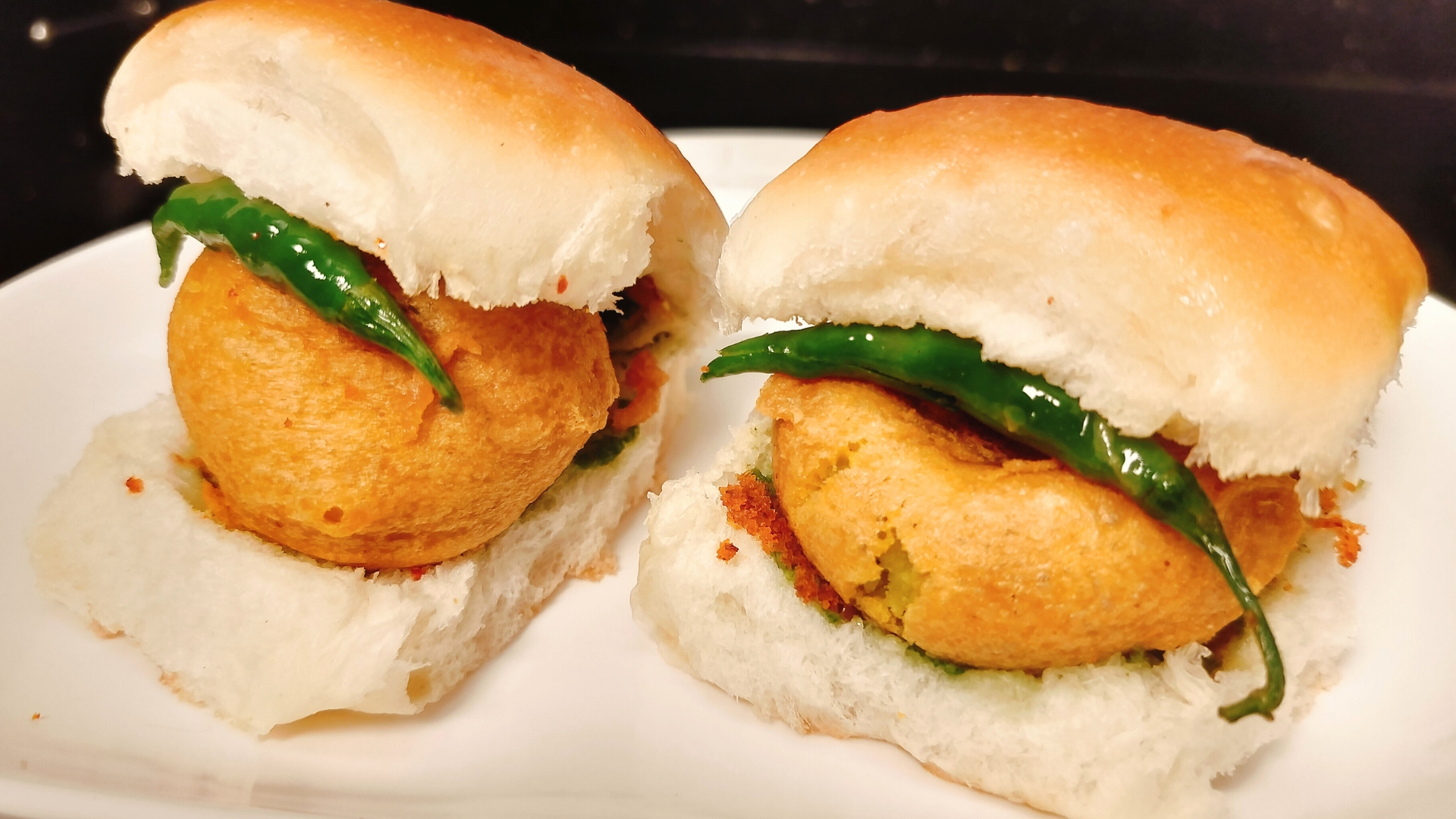Vada Pav Recipe: The Ultimate Guide to Mumbai’s Beloved Street Food
Vada Pav, often dubbed as the “Indian Burger,” is a beloved street food that has captured the hearts and taste buds of millions. Originating from the bustling streets of Mumbai, this humble yet flavorful snack consists of a spicy potato fritter (vada) sandwiched between a soft bread roll (pav). With its crispy exterior, soft interior, and a burst of flavors from the chutneys, Vada Pav is more than just a snack—it’s an emotion for many. In this guide, we’ll take you through everything you need to know to make the perfect Vada Pav at home, from its rich history to the step-by-step recipe. Ingredients Before checking the recipe, let’s gather all the ingredients you’ll need to create this iconic dish. For the Vada (Potato Fritter): For the Batter: For Green Chutney: For Red Dry Chutney: For Assembling the Vada Pav: Step-by-Step Recipe Now that we’ve got our ingredients ready, let’s walk through the process of making Vada Pav step by step. 1. Make the Batter: 2. Making the Green Chutney: 3. Prepare the Potato Filling: 4. Fry the Vadas: 5. Assemble the Vada Pav: Tips for Perfection Achieving the perfect Vada Pav requires a few tricks that can make all the difference: Serving Suggestions Vada Pav is typically served as a snack or a quick meal. Here are some serving suggestions to enhance your experience: Common Mistakes to Avoid To make the best Vada Pav, steer clear of these common mistakes: History and Origin Vada Pav is deeply rooted in Mumbai’s culture. It was first created in the 1960s by Ashok Vaidya, a street vendor who operated near Dadar railway station. The idea was simple yet innovative: provide a quick and affordable snack to the city’s bustling working class. The Vada Pav quickly gained popularity and became a symbol of Mumbai’s street food culture, embodying the city’s fast-paced life and its diverse culinary heritage. Health Benefits While Vada Pav is undoubtedly a treat, it also offers some nutritional benefits: However, due to its deep-fried nature, Vada Pav should be enjoyed in moderation as part of a balanced diet. Variations Over the years, many variations of Vada Pav have emerged, catering to different tastes and preferences: Regional Cuisines While Vada Pav is synonymous with Mumbai, it has made its way into various regional cuisines with slight modifications: Frequently Asked Questions (FAQs) 1. Can I bake the vadas instead of frying them? Yes, you can bake the vadas for a healthier option. Preheat your oven to 180°C (350°F) and bake them for about 15-20 minutes or until golden brown, flipping halfway through. 2. How can I store leftover vadas? Leftover vadas can be stored in an airtight container in the refrigerator for up to 2 days. Reheat them in an oven or air fryer to regain their crispiness before serving. 3. Can I freeze the vada mixture? Yes, you can prepare the vada mixture in advance and freeze it. Shape them into balls and freeze them on a tray before transferring them to a freezer bag. They can be fried directly from frozen, but the cooking time may be slightly longer. 4. What is the best way to reheat Vada Pav? To reheat Vada Pav, place the vadas in an oven or air fryer to make them crisp again. Toast the pav lightly on a griddle with some butter before assembling. 5. Is Vada Pav vegan? Yes, Vada Pav is naturally vegan as it does not contain any animal products. Just ensure that the pav buns you use are vegan, as some commercially available ones might contain dairy. To know more about Vada Pav click here. Few of our other Trending Recipes: Pav Bhaji Recipe: A Delicious Journey Through India’s Favorite Street Food Palak Paneer Recipe: A Flavorful and Nutritious Indian Classic

